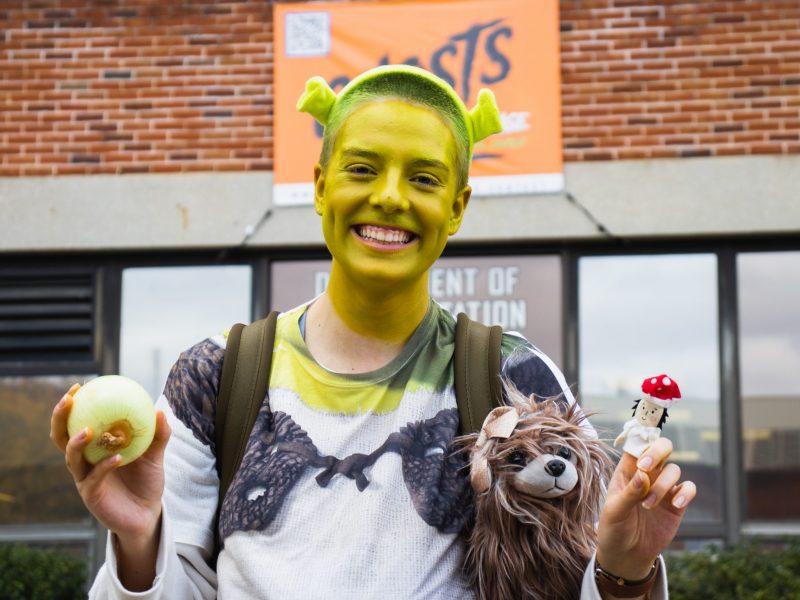When I first agreed to attend Katsucon at the National Harbor earlier this year, I wasn’t entirely sure what I was getting myself into. I’d briefly heard about the Japanese anime convention before, but other than a vague understanding of the terms “kawaii” and “senpai,” I was completely oblivious to the nature of the event. I doubt even now I could accurately describe more than a couple of prominent anime characters. But looking back, there was one aspect of the convention that I don’t think I could ever forget — the cosplay.
During those three days, the National Harbor was transformed into a fictional wonderland. Squads of cosplayers roamed the streets, bringing a sense of magic to the otherwise unchanged harbor. Lines at CVS turned into animated conversations with Asuka Soryu and Rei Ayanami. Elevator rides almost always included Harley Quinn and the Joker. Meals were taken in the company of Tracers, Widowmakers and Sombras. It seemed as if reality had been briefly suspended, all thanks to the magic of cosplay. The experience was unreal, and yet was also one anyone could partake.
On its surface, cosplay is the combination of costume and play. It’s when a person creates a costume based on a fictional character, and then plays that character while in costume. In some ways it’s like adult dress-up, although acting is also important to create a complete physical manifestation of a character.
“I think cosplaying is different than making a costume because you take on a bit of the character you are trying to portray,” said sophomore economics major Abisola Fatodu. “Cosplaying is also a way to meet people with similar interests versus just wearing clothes you wouldn’t normally wear.”
Although Katsucon was an anime convention, cosplay in itself isn’t strictly bound to Japanese animation. The range of characters that can be done is practically limitless, with comic book, video game and television characters all plausible. Ultimately, it’s up to the creator to decide and fully commit to which character they want to embody. Because if there’s one thing cosplay is, it’s a commitment.
“I started [cosplaying] like three years ago, but it was really just one cosplay a year until recently,” sophomore Russian major Kristina Yin said. “[It takes] like three weeks per cosplay and most of the day for those three weeks.”
While such a time commitment may at first seem unrealistic, it’s important to remember that for a lot of people participating in cosplay there’s no blueprint for them to work off — everything is done from scratch.
“Usually I just pick a character I like that also has clothes I think are pretty,” said Yin. “I try to find one that’s not too overdone but not too unknown either. Then I find reference [pictures] and tutorials if they exist, then really just wing it when I make it.”
“Everything I’ve done is entirely self taught through trial and error,” said Kaitlyn Peltzer, an active cosplayer and alumna of this university. “I choose a character based on how much I like them and if I think they match with my personality and body type. [From there] I basically get out my dress form, grab a monster amount of reference pictures and start drawing out the pattern.”
Cosplay at its base is a form of artistic expression. The basic framework of a character might already exist, but that doesn’t mean there can’t be any variation. Adapting a character into a steampunk, gender-bent, or even pin-up style is not uncommon, and really only furthers the creativity. Whether a costume is adapted or exactly copied, cosplay gives others the chance to interact with their favorite characters in real life.
“Cosplay to me is an ever-growing and evolving craft,” Peltzer added. “It’s a place where people can come together to create their favorite characters and bring them to life. Also, cosplay is for everyone so never let someone tell you that you can’t.”



